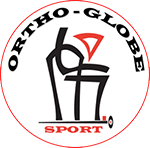Fixation of 4-part fractures of the proximal humerus : Can we identify radiological criteria that support locking plates or IM nailing ?
Comparrative, retrospective study of 107 cases
Abstract
Introduction: No objective criteria exist to help surgeons choose between IM ng and plate fixation for 4-part fractures of the proximal humerus, The goal of this study was to identify radiological criteria that would make one technique a better choice than the other.
Material and methods: This was a comparative, multicentre, retrospective study o 54 cases of antegrade nailing and 53 cases of plating performed between anuary 2009 and 31 December 2011 for 4-part fractures of the proximal humerus. All patients had a minimum radiological and clinical follow-up of 18 months. The functional outcomes were evaluated using the weighted Constant score: a poor result was defined as a weighted Constant score <70 The following radiological criteria were evaluated during the preoperative assessment and at the last follow-up: initial displacement and reduction of humeral head and tuberosi morphology of the medial column (i.e. calcar comminution, posteromedial hinge. size ties: metaphyseal head extension): occurrence of avascular necrosis (AVN)
Results: After an average follow-up of 42 months the weighted Constant scores and rate of poor outcomes were 77 and 48 in the nail group and 81% and 38% in the plategroup.respectively(ns) The humeral head was reduced into an anatomical position, valgus or varus in 57%, 30% and 13% of cases in the nail group, and 583.293 and 132 in the plate group. respectively. The tuberosities healed in an anatomical position in 72 of nail cases and 70 of plate cases (ns) Only the presence of a medial hinge preoperatively had an effect on the functional outcomes in the nail and plate groups: the weighted Constant scores (P 0.05) poor 0.02)were 82xand 52 in thenailgroup 9x in the plate group, respectively. The complication rates were comparable: the rates of AVN and articular screw penetration were 17 and 11 in the nail group and 15 and 112 in the plate group, respectively.The surgical revision rate was 18.5x in the nail group and 30 in the plate group.
Conclusion: If the medial hinge is preserved, we recommend locking plate fixation. In other cases, either technique can be used as long as the general rules of internal fixation are applied: reduction of the tuberosities, varus correction and stabilization of the area Level of evidence: IV. retrospective study.
Pour lire cet article en intégralité : FESH OTSR



